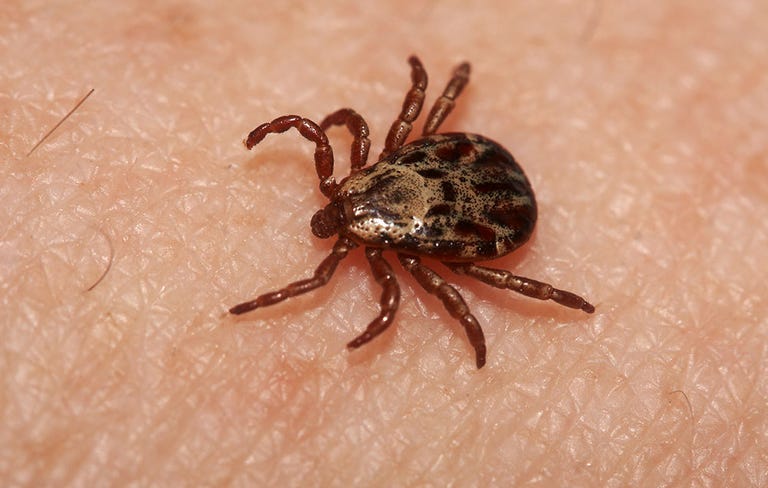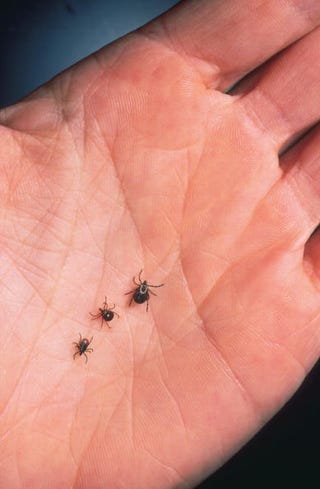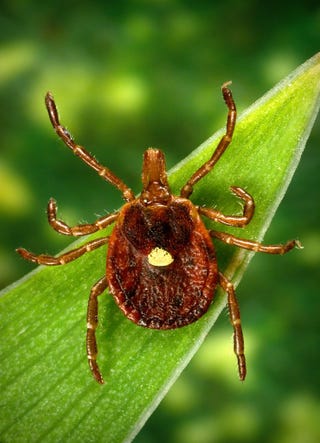
Bad news for steak fans: A single bite from the lone star tick could make you allergic to red meat.
Earlier in 2018, public health experts warned that we’re facing a “tick explosion” throughout the country. Now, scientists say that meat allergies — also known as alpha-gal syndrome — are on the rise due to the migration of lone star tick populations, NPR reported.
The lone star tick typically resides in the southeastern portion of the United States, but have made northern states like Maine, New York, and Minnesota home in recent years. Scientists believe changing weather patterns are making new regions more hospitable to these creepy crawlers.
“We expect with warming temperatures, the tick is going to slowly make its way northward and westward and cause more problems than they’re already causing,” Allergist Dr. Ronald Saff, of Tallahassee, Florida, explained to Business Insider.

Getty Images
According to NPR, Allergist Dr. Scott Commins of the University of North Carolina, Chapel Hill, was one of the first doctors to link meat allergies to tick bites. When he made the discovery roughly 10 years ago, there were just several dozen cases of tick-induced meat allergies. Now, the numbers have increased dramatically, he says.
“We’re confident the number is over 5,000 [cases], and that’s in the U.S. alone,” Commins told NPR.
The lone star tick is the only species linked to meat allergies in the United States. However, alpha-gal syndrome is connected to different types of ticks in Europe, Australia, and Asia.

Getty Images
What you should know about tick-bite-induced allergies
Ticks have a sugar molecule known as alpha-gal in their systems, which is also found in mammals like cows, sheep, and pigs. When a tick latches onto a human, this molecule gets injected into our system; however, it only causes certain people’s immune systems to react so strongly they can’t eat red meat.
Some people who develop the allergy are unable to eat dairy, too. While symptoms for most food allergies — like shellfish — pop up almost immediately, the same isn’t true with alpha-gal. Signs like wheezing, hives, and abdominal pain don’t arise until three to six hours after eating trigger foods.
Researchers are still not sure why some people develop the allergy while others can continue their steak-eating ways. A blood test can confirm whether someone has developed the condition.
What you should know about Lone Star Ticks
Lone star Ticks are active from March through September, making now the prime time to worry about potential bites. Although people who live in the southeast are most at risk, these ticks are now found in Minnesota, New York, New Hampshire, and Maine. In 2016, 100 people in Long Island, NY, developed the red meat allergy after receiving a tick bite, Wired reported last year.
Though the lone star tick can spread other serious bacterial infections, like human ehrlichiosis, it does not carry Lyme disease.
Adult female lone star ticks are distinguished by a single white dot in the center of their bodies. Males have white spots or streaks on the outer edge of their bodies.

CDC.gov
How to protect yourself against Lone Star Ticks
The best way to save your skin from these blood suckers is to wear long sleeved clothes and pants, MensHealth.com previously reported. Of course, this may sound like torture on those 90-degree days, so if you’re not going to cover up, you should definitely invest in insect repellent. Spray your body and clothing with formulas containing DEET or picaridin for the best protection, and always inspect yourself for ticks when you get home.
Source: Read Full Article
